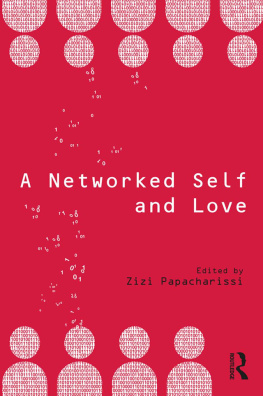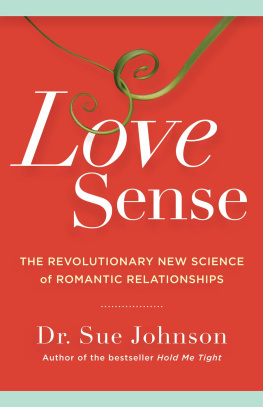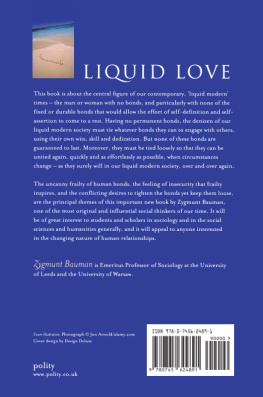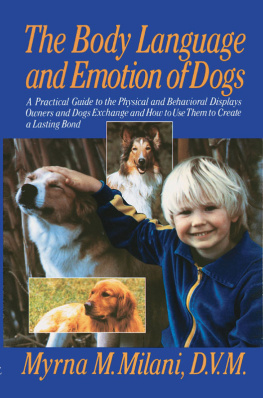
In often moving ways, this scholarly text explains how love has come to be at the heart of late modern morality. The book beautifully navigates from explaining the sacred to the mundane ideas, myths, rituals and experiences of love and how they have changed. This is a theoretically rich and empirically exciting journey that seeks to illustrate love as a social bond as well as an emotion that has become predominant in linking individuals to the social sphere in durable ways. It is a compelling account of the ways in which love has become the fundamental organising principle of our social world with implications for how intimates are morally distinguished from non-intimates and how consumption is entangled with our selves and desires.
Mary Holmes, University of Edinburgh, UK
Seebach has produced a grand systematic treatise on the historical transformations of love as code, ritual, and experience. Skillfully integrating Simmel and Luhmann with micro-sociology of emotions, he shows how love survives within the frames of contemporary myths and rituals of the second order even in the flux of late modernity.
Randall Collins, author of Interaction Ritual Chains
Seebachs Love and Society covers a lot of ground: not only does it superbly review the now crowded space of theories of love, but it also analyzes the rituals, stories and forms of exchange at work at love, and asks what makes love a second order social form, that is a social form made to last. The idea of love as a second order social form is original and persuasively argued throughout. This is an important addition to the philosophical and sociological literature on love.
Eva Illouz, EHESS and Hebrew University of Jerusalem, Israel
Love and Society
Why does love matter?
Love and Society discusses the meaning and importance of love for contemporary society. Love is not only an emotion that occurs in our intimate relationships; it is a special emotion that allows us to relate to each other in a lasting fashion, to create out of our individual pasts a shared past, which enables us to project a shared future.
Bringing together the idea of Simmels second-order forms with theories of love, this insightful volume shows that the answer to why love is so central to society can be found in the social transformation of the last two centuries. It also explains how we can build our strongest social bonds on the fragility of an emotions thanks to the creation of special moments (love rituals) and intimate stories (love myths) that are central to the weaving of lasting social bonds. Going to the cinema, reading a book together or sharing songs are forms of weaving bonds of love and part of the cycle of love. But love is not only shared between two people; the desire and the search for love is something we share with almost all members of society.
With rich empirical data, an analysis of loves transformation in modernity, and a critical engagement with classical and contemporary theorists, this book provides a lively discussion on the meaning and importance of love for todays society. It will be of interest to undergraduate and postgraduate students and postdoctoral researchers who are interested in fields such as Sociology of Emotions, Sociological Theory and Sociology of Morality.
Swen Seebach is a Juan de la Cierva postdoctoral researcher at UAB (Barcelona Autonomous University), Spain.
Sociology of Emotions series
Love and Society
Special Social Forms and the Master Emotion
Swen Seebach
Love and Society
Special Social Forms and the Master Emotion
Swen Seebach
First published 2017
by Routledge
2 Park Square, Milton Park, Abingdon, Oxon OX14 4RN
and by Routledge
711 Third Avenue, New York, NY 10017
Routledge is an imprint of the Taylor & Francis Group, an informa business
2017 Swen Seebach
The right of Swen Seebach to be identified as author of this work has been asserted by him in accordance with sections 77 and 78 of the Copyright, Designs and Patents Act 1988.
All rights reserved. No part of this book may be reprinted or reproduced or utilised in any form or by any electronic, mechanical, or other means, now known or hereafter invented, including photocopying and recording, or in any information storage or retrieval system, without permission in writing from the publishers.
Trademark notice: Product or corporate names may be trademarks or registered trademarks, and are used only for identification and explanation without intent to infringe.
British Library Cataloguing in Publication Data
A catalogue record for this book is available from the British Library
Library of Congress Cataloging in Publication Data
A catalog record for this book has been requested
ISBN: 978-1-138-80368-8 (hbk)
ISBN: 978-1-315-75356-0 (ebk)
Typeset in Times New Roman
by Wearset Ltd, Boldon, Tyne and Wear
Dedicated to Drio, Nria, Elisabet Judit and Guillem
Contents
PART I
An idea of love
PART II
A myth of love
PART III
An experience of love
With these first words I would like to thank all those who have theoretically, academically and personally accompanied my journey of writing this book. I would like to thank Francesc Nez Mosteo and Christian Papilloud for their excellent help in intellectually preparing me for this book. I would also like to thank Natlia Cant Mil, Isaac Gonzlez Balletb, Roger Martinez Sanmart and all other members of the research group Grup de Recerca en Cultura i Societat Research Group of Culture and Society (GRECS) (Universitat Oberta de Catalunya Open University of Catalonia (UOC)) who have helped me with suggestions and ideas in the course of writing this book. I would like to thank the people of the Walter Benjamin Foundation in Portbou and my colleagues from the research group Science and Technology Studies Barcelona (STS-b) (Portraits of Bios in the Social (POBICS)), and Francisco Tirado at the Autonomous University of Barcelona, who contributed especially to the conclusion of this book. I would like to thank Martin Berg, Otthein Rammstedt and Tova Benski for their excellent feedback. I would also like to thank the editors, Mary Holmes and Julie Brownlie, for taking my book into the Routledge Studies in the Sociology of Emotion Series, and Emily Briggs and Elena Chiu from Routledge for their excellent help during the writing process. I want to express my deep gratefulness to Natlia Cant Mil, who has inspired my work with concepts, reflections and criticism, and has shared with me this long journey that has now come to an end.
God is dead. God remains dead. And we have killed him. How shall we comfort ourselves, the murderers of all murderers? What was holiest and mightiest of all that the world has yet owned has bled to death under our knives: who will wipe this blood off us? What water is there for us to clean ourselves? What festivals of atonement, what sacred games shall we have to invent? Is not the greatness of this deed too great for us? Must we ourselves not become gods simply to appear worthy of it? There has never been a greater deed; and whoever is born after us for the sake of this deed he will belong to a higher history than all history hitherto.









